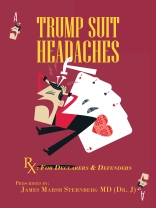The trump suit adds a dimension that makes bridge so different from other card games. In a suit contract, play is complicated by declarer’s need to keep control. If control is lost, it may be almost impossible to make proper use of one’s strength in the side suits.
Before playing to trick one, one should ask what might go wrong? If playing a suit contract, is there a reason not to draw trumps? Or maybe just some of the trumps?
Safety plays apply to all suits. Focus is on the trump suit, but the same general principles can be applied elsewhere. The skillful player displays pessimism: Suits will break badly, all fi nesses will lose, that’s the starting point, and things will probably get worse.
We will look at a series of hands both from the declarer’s perspective and the defenders’, with focus on the trumps, and see how some of these problems might be managed. With bad trump splits, or playing 4/3 or 5/2 fi ts, it’s easy to lose control. Timing is crucial.
On defense, we will look at trump promotion, shortening declarer’s trump holding, the importance of the ace of trumps on defense, when to ruff, when not to ruff, falsecarding, and other weapons available.
Об авторе
Dr James Marsh Sternberg is a radiologist in Palm Beach Gardens Florida & Professor of Radiology at two northern universities. He currently teaches bridge in Florida. He has won several North American National Championships and has written extensively for many bridge publications. He is the author of “Playing To Trick One”, There Are No Mulligans In Bridge.
“Dr J” lives in Palm Beach Gardens with Vickie Bader.He can be reached at [email protected].












